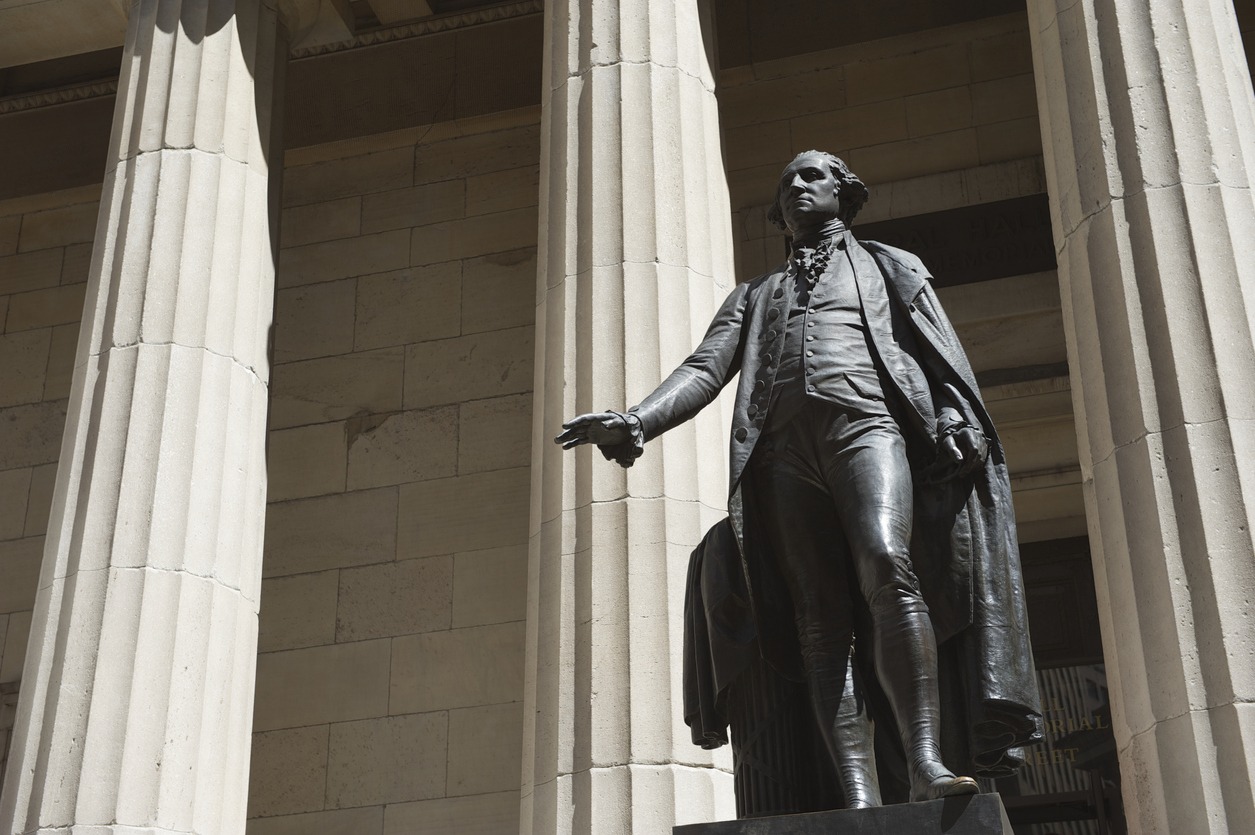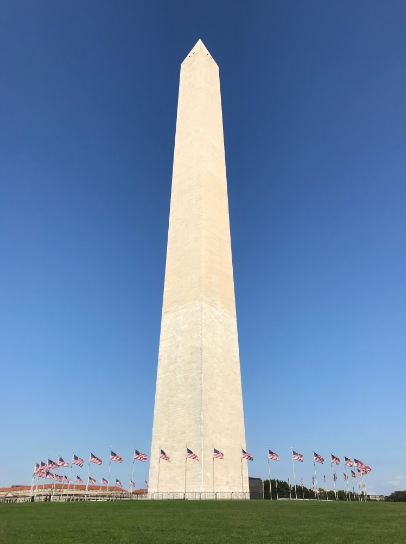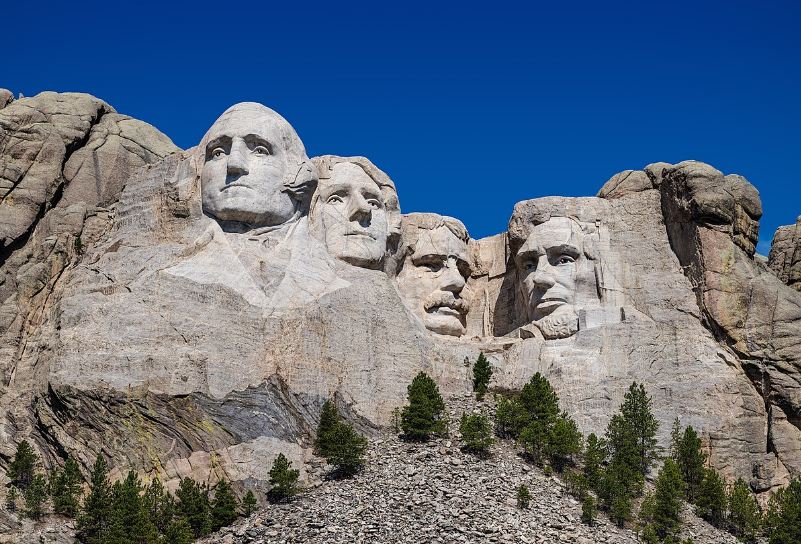George Washington was the first president of the United States of America, led the army that secured the country’s independence, an act of perseverance, courage, and vision that aided in forming a republic centered on the idea of representative government.
Discover the establishments named after and built to honor his contributions that shaped the United States of America.
Washington Monument
The Continental Congress first proposed a monument to Washington in 1783, when it utilized funds to build a statue of the country’s military commander on horseback. The eventual site for the figure, the exact surveyed center of the original District of Columbia, on direct axes with the White House and the United States Capitol, was purposefully reserved for such a grand monument when Pierre-Charles L’Enfant designed the city in 1791. President Thomas Jefferson pushed a stone marker into the proposed site in 1804; however, it later sank into the marsh. The construction was quickly abandoned due to a variety of issues, including bureaucratic inertia.
Mount Rushmore, South Dakota
Mount Rushmore is a carving of the four faces of four American presidents. It is a national monument located in the Black Hills of South Dakota. Who chose these four men for their contributions to the formation of the United States of America.
George Washington, the Commanding General of the Revolutionary Army, the first President of the United States, and forever known as the “Father of his Country,” is an indispensable figure in American history. There is no America without Washington. His consistent leadership, integrity, and judgment laid the groundwork for our fledgling republic. His place on Mount Rushmore, a monument in the capital bearing his name, a state, and numerous roads, counties, towns, and universities are all fitting tributes to this great man.
Heald Square Monument
The Lorado Taft Heald Square Monument is a bronze sculpture group in Chicago’s Herald Square. It illustrates General George Washington and two of the American Revolution’s significant funders, Robert Morris and Haym Salomon. Following Taft’s death in 1936, the statue was completed by his associates Leonard Crunelle, Nellie Walker, and Fred Torrey.
Herald Square is in the Michigan–Wacker Historic District of Chicago’s Loop neighborhood. Captain Nathan Heald, commander of Fort Dearborn from 1810 to 1812, was honored with the square’s name.
On September 15, 1971, the sculpture was designated a Chicago Landmark.
George Washington Statue (Seattle)
Another Achievement legacy is the statue of George Washington that greets visitors at the entrance to today’s Central Plaza. The Daugther of the American Revolution Rainier Chapter appointed the figure from Chicago-based sculptor Lorado Taft and raised the necessary funds over four years. They encouraged students from across the state to contribute their pennies, no more than five cents each. The DAR was able to raise $6,000 through these and other contributions. The state of George Washington contributed another $8,000, and the statue was dedicated during the Exposition on Flag Day, June 14, near where it now stands. You can also read our post about the first lady of George Washington here.
George Washington Monument (Chicago Park)
On July 3, 1775, George Washington took charge of the Revolutionary forces in Cambridge, Massachusetts, raised his sword. The horse was created by Potter, while the figure was created by the French, who modeled the face after a bust created from life by Jean Antoine Houdon. Potter and French collaborated on several works that included human and animal figures, including groups that flanked the Grand Basin at the World’s Columbian Exposition in 1893. On the other hand, Potter is best known for his lions at the New York Public Library.
George Washington Birthplace National Monument
Washington’s Birthplace National Monument is a great historical location in Westmoreland County, Virginia. In the mid-17th century, Englishman John Washington established a colonial tobacco plantation on this site. John Washington was the great-grandfather of George Washington, the first president of the United States of America, and the general of the Continental Army. On February 22, 1732, George Washington was born in this house. He lived here until he was three years old, then returned as a teenager.
Who lost the original house before the twentieth century, but the foundation outlines of Washington’s home are still visible. They created the public park in 1930, and it built a memorial house in 1931 to mark the site and represent an 18th-century tobacco plantation. During the Great Depression, the historic park opened in 1932. A Memorial Shaft obelisk of Vermont marble stands at the entrance to the grounds, now maintained and operated by the National Park Service. It is a one-tenth-scale replica of the Washington Monument in Washington, D.C.
The monument (which refers to the house, property, and memorial complex) and its preceding plantation, which would eventually be known as Wakefield, is located at the confluence of Popes Creek and the larger Potomac River and are typical of 18th-century Virginia tobacco plantations. To represent the environment Washington knew as a boy, the area has been restored, planted, and maintained with farm buildings, tree groves, livestock, gardens, and tobacco and wheat crops.
Conclusion
George Washington was a successful leader who played an essential role in the American Revolutionary War and informed the United States of America. Without some of the battles and events that George Washington commanded or was involved in, America might not be today. During the winter at Valley Forge, George Washington stood up for his army, demonstrating leadership and gaining popularity among his army and the American people. George Washington was victorious during his presidency, even though he resigned during his second term.
US Presidents | ||




